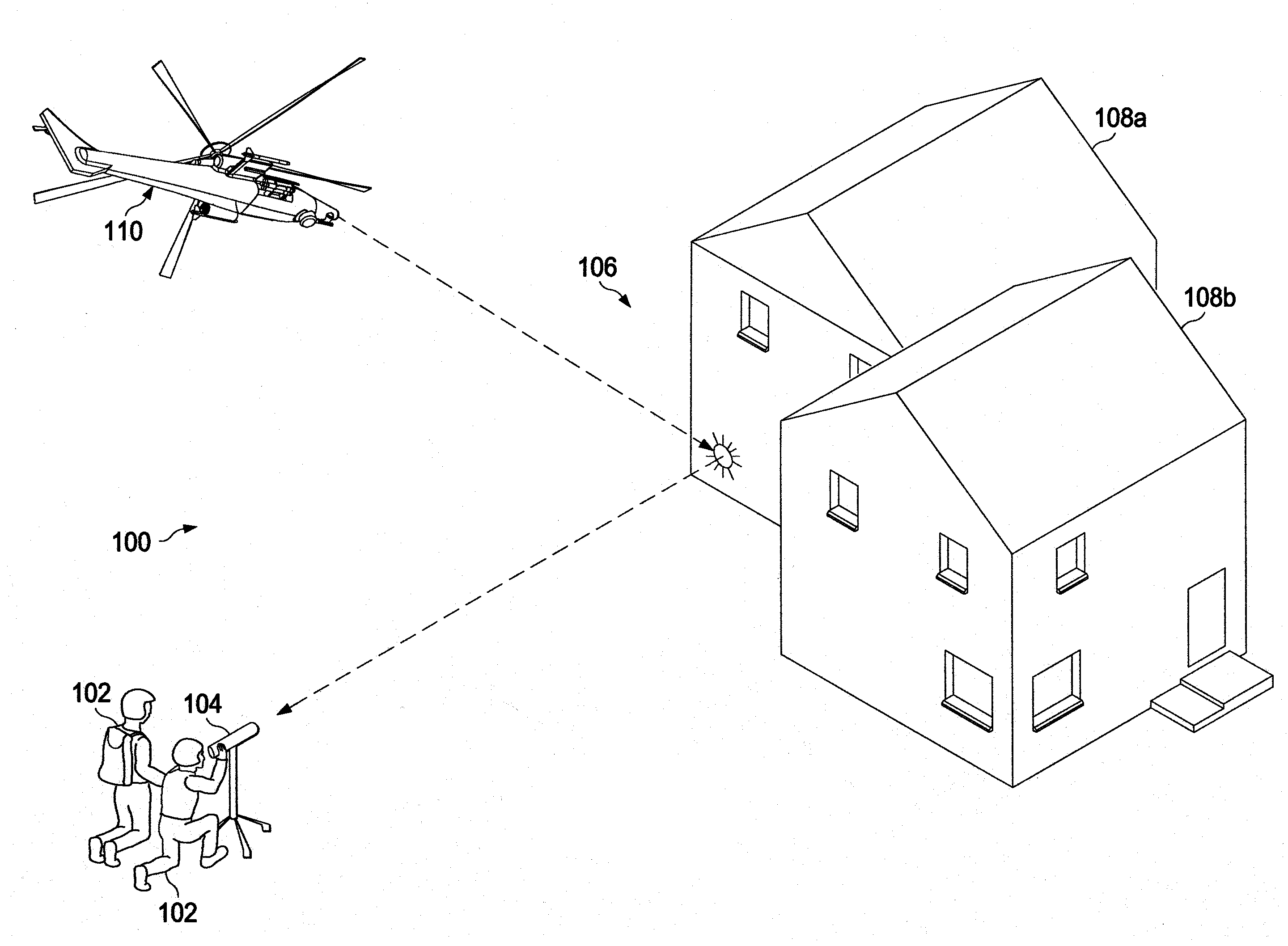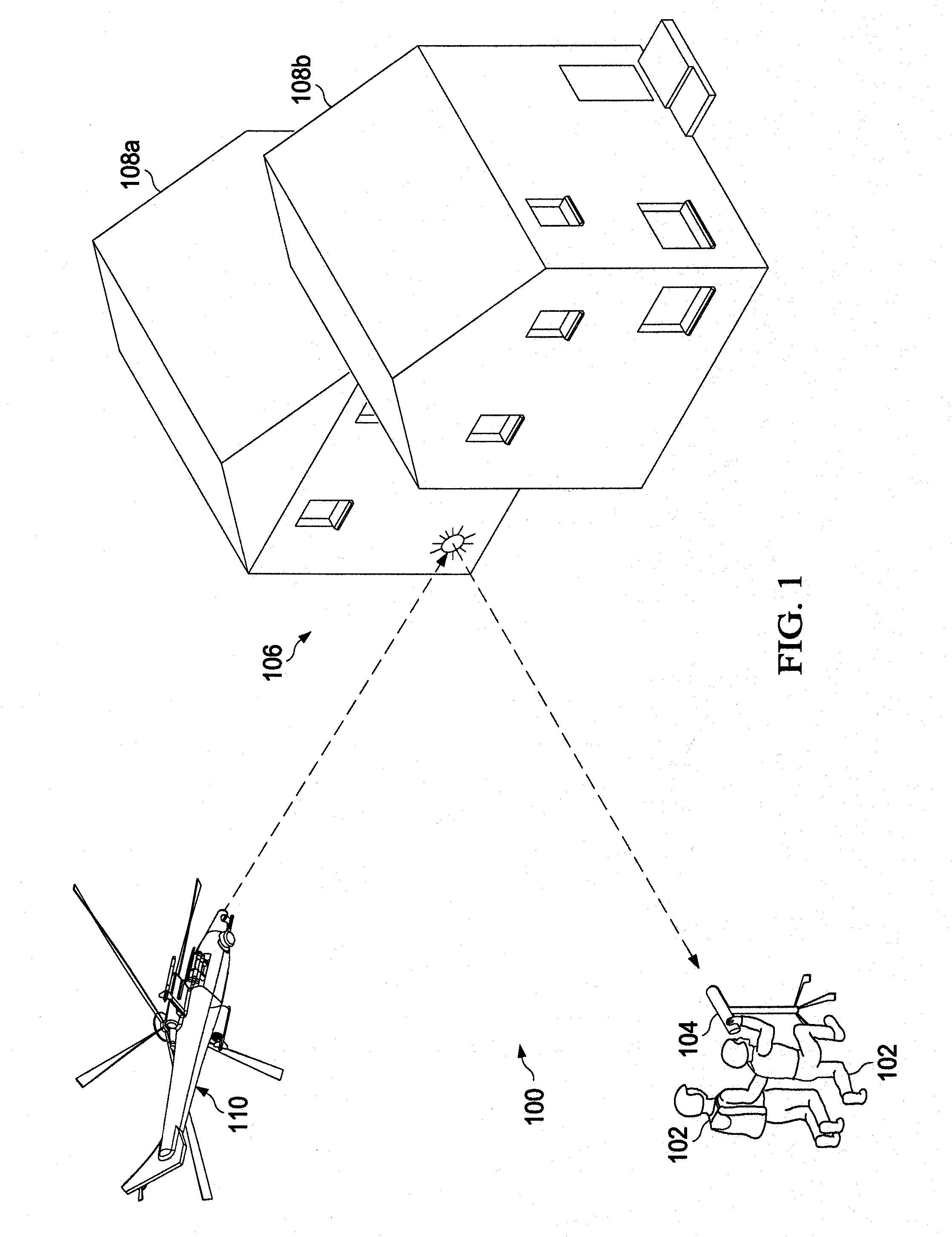System and method for identifying non-cooperative pulsed radiation sources in a field-of-view of an imaging sensor
a non-cooperative, imaging sensor technology, applied in the direction of optical radiation measurement, photometry using electric radiation detectors, instruments, etc., can solve the problems of increased camera weight and power consumption, problems and other operational limitations of field and other military personnel, and achieve the effect of less weight, less energy consumption, and increased field of view
- Summary
- Abstract
- Description
- Claims
- Application Information
AI Technical Summary
Benefits of technology
Problems solved by technology
Method used
Image
Examples
Embodiment Construction
[0029]With regard to FIG. 2, a block diagram of electronic components of an illustrative camera 200 is shown. The camera 200 may be configured to record imaging data of a scene in one or more bands of optical or non-optical frequencies. The term “camera” may be used to describe an electro-optical system that collects or does not collect image data, such as binoculars, telescopes, or any other system that is configured to identify characteristics of pulsed radiation sources. The characteristics of the pulsed radiation sources may include pulse repetition frequency codes of pulsed radiation sources to identify a type of pulsed radiation source that is illuminating a target or other object. The camera 200 may include dual-band optics 202 that are configured to receive an optical signal 204, such as that in the 1.06 micrometer range, and midwave infrared frequency (MWIF) signal 206. In one embodiment, the dual band-optics 202 are configured to provide a field-of-view that is greater tha...
PUM
 Login to View More
Login to View More Abstract
Description
Claims
Application Information
 Login to View More
Login to View More - R&D
- Intellectual Property
- Life Sciences
- Materials
- Tech Scout
- Unparalleled Data Quality
- Higher Quality Content
- 60% Fewer Hallucinations
Browse by: Latest US Patents, China's latest patents, Technical Efficacy Thesaurus, Application Domain, Technology Topic, Popular Technical Reports.
© 2025 PatSnap. All rights reserved.Legal|Privacy policy|Modern Slavery Act Transparency Statement|Sitemap|About US| Contact US: help@patsnap.com



